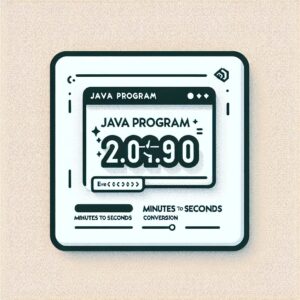Are you new to coding and curious about how decisions are made in PHP? Well, you’re in the right place! Today, we’re going to explore the ‘PHP switch Statement’, an essential tool in any developer’s toolkit. The PHP switch Statement allows you to handle different conditions more efficiently than using multiple ‘if’ statements. Instead of writing lengthy codes filled with conditions, why not learn a streamlined way to make your code cleaner and more understandable? Keep reading, as we’ll break down how the PHP switch Statement works with simple examples and practical tips.
Understanding the Switch Case Statement
The switch case statement in PHP is a control structure used for executing different blocks of code based on the value of a variable. It is particularly useful when handling multiple conditions efficiently. Instead of writing long if-else chains, switch provides a cleaner, more readable approach.
Definition and Significance in PHP
The switch statement evaluates an expression and executes the matching case block. If no match is found, the default block (if present) runs. This structure improves readability and efficiency when dealing with multiple conditional checks.
Comparison with if-else Statements
- Readability:
switchis more structured and easier to read than multipleif-elsestatements. - Performance: In cases with numerous conditions,
switchcan be faster thanif-else, as it may use jump tables for optimization. - Usage:
if-elseis better for complex conditions, whileswitchis ideal for checking a single variable against multiple fixed values.
Thus, the switch case statement simplifies decision-making in PHP programs.
Syntax and Structure of the Switch Case Statement in PHP
The switch statement in PHP provides a structured way to evaluate a variable against multiple values, executing the corresponding block of code when a match is found. Below is the general syntax:
switch (expression) {
case value1:
// Code to execute if expression equals value1
break;
case value2:
// Code to execute if expression equals value2
break;
...
default:
// Code to execute if no match is found
}
Breakdown of Each Component
- Switch Expression
- The expression inside
switch()is evaluated once. - It can be a variable, function result, or any valid PHP expression.
- The expression inside
- Case Labels
- Each
casedefines a possible value the expression might take. - If the value matches, the corresponding code executes.
- Each
- Break Statement
breakprevents fall-through, ensuring only the matched case executes.- Without
break, PHP continues executing subsequent cases.
- Default Case
- Executes when no case matches.
- Acts as a fallback mechanism, similar to an
elseinif-elsestatements.
Example Usage
$day = "Monday";
switch ($day) {
case "Monday":
echo "Start of the workweek!";
break;
case "Friday":
echo "Weekend is near!";
break;
default:
echo "It's a regular day.";
}
This structure makes switch a clean and efficient alternative to multiple if-else conditions.
How the Switch Case Statement Works in PHP?
The switch statement in PHP evaluates an expression and executes the corresponding case block based on the matched value. Below is a step-by-step breakdown of how it works:
Step-by-Step Execution Flow
- Expression Evaluation:
- The value inside
switch(expression)is evaluated once at the beginning.
- The value inside
- Case Matching:
- The program checks each
caselabel to find a match for the evaluated expression.
- The program checks each
- Execution of Matched Case:
- If a match is found, PHP executes the corresponding block of code.
- If no match is found, the
defaultcase (if present) executes.
- Break Statement Handling:
- If a
breakstatement is present, execution exits the switch block after executing the matched case. - If
breakis missing, PHP executes subsequent cases (fall-through behavior).
- If a
- End of Execution:
- The program resumes execution after the switch block.
Importance of the Break Statement
The break statement is essential to prevent fall-through, where PHP continues executing all subsequent cases, even if one matches.
Example of fall-through behavior (missing break):
$fruit = "apple";
switch ($fruit) {
case "apple":
echo "You selected apple.";
case "banana":
echo "You selected banana.";
}
Output:
You selected apple.You selected banana.
Since break is missing after "apple", "banana" also executes.
Corrected version using break:
case "apple":
echo "You selected apple.";
break;
This ensures only the matched case executes, preventing unintended behavior.
Practical Examples of the Switch Case Statement in PHP
The switch statement is useful for handling multiple conditions efficiently. Below are three practical examples demonstrating different use cases.
Example 1: Basic Switch Case Usage
$day = "Monday";
switch ($day) {
case "Monday":
echo "Start of the workweek!";
break;
case "Friday":
echo "Weekend is near!";
break;
case "Sunday":
echo "It's a relaxing day!";
break;
default:
echo "It's a regular day.";
}
Output:
Start of the workweek!
This example checks the value of $day and executes the matching case.
Example 2: Handling Multiple Cases with the Same Outcome
$fruit = "apple";
switch ($fruit) {
case "apple":
case "banana":
case "grapes":
echo "This is a common fruit.";
break;
case "dragonfruit":
case "kiwi":
echo "This is an exotic fruit.";
break;
default:
echo "Unknown fruit.";
}
Output (if $fruit = "banana"):
This is a common fruit.
Here, multiple cases share the same output, reducing code duplication.
Example 3: Using the Default Case for Unmatched Conditions
$grade = "E";
switch ($grade) {
case "A":
echo "Excellent!";
break;
case "B":
echo "Good!";
break;
case "C":
echo "Needs Improvement.";
break;
default:
echo "Invalid Grade.";
}
Output (if $grade = "E"):
Invalid Grade.
The default case ensures an appropriate response for unrecognized values.
Common Pitfalls and Best Practices in PHP Switch Case
1. Avoiding Fall-Through with Proper break Usage
One of the most common mistakes in switch statements is fall-through, where multiple cases execute unintentionally due to a missing break statement.
Example of Fall-Through (Incorrect Code):
$color = "red";
switch ($color) {
case "red":
echo "You chose red.";
case "blue":
echo "You chose blue.";
}
Output:
You chose red.You chose blue.
To prevent this, always use break unless fall-through is intentional.
Corrected Code:
case "red":
echo "You chose red.";
break;
2. Handling All Possible Cases (Using default)
Always include a default case to handle unexpected values.
$grade = "F";
switch ($grade) {
case "A":
case "B":
echo "Pass";
break;
case "C":
echo "Average";
break;
default:
echo "Invalid Grade";
}
This prevents bugs by covering all scenarios.
3. Writing Clean and Readable Switch Case Statements
- Align
caselabels and indent properly. - Avoid deep nesting by extracting logic into functions if needed.
- Group cases with similar outcomes to reduce redundancy.
Advanced Usage of Switch Case in PHP
1. Nested Switch Case Statements
Switch statements can be nested inside one another for complex decision-making.
$category = "fruit";
$item = "apple";
switch ($category) {
case "fruit":
switch ($item) {
case "apple":
echo "Apple is a fruit.";
break;
case "banana":
echo "Banana is a fruit.";
break;
}
break;
case "vegetable":
echo "It's a vegetable.";
break;
}
This is useful for multi-level decision trees.
2. Switch Case with Complex Expressions
PHP allows expressions in switch conditions.
$age = 25;
switch (true) {
case ($age < 18):
echo "Minor";
break;
case ($age >= 18 && $age <= 60):
echo "Adult";
break;
default:
echo "Senior";
}
Here, the switch evaluates boolean expressions instead of simple values.
3. Alternative Syntax for PHP Switch Case
PHP provides an alternative syntax, useful in templates or embedded PHP within HTML:
switch ($day):
case "Monday":
echo "Start of the week";
break;
case "Friday":
echo "Weekend is near";
break;
default:
echo "Regular day";
endswitch;
This syntax improves readability in mixed PHP-HTML code.
By following these best practices and leveraging advanced techniques, you can write efficient and maintainable switch statements in PHP.
Performance Considerations of Switch Case in PHP
1. Switch Case vs. If-Else Performance
The switch statement is generally more efficient than an if-else chain when checking a single variable against multiple possible values. Here’s why:
- Jump Table Optimization:
- Many compilers and interpreters optimize
switchby creating a jump table, making case lookups faster. if-elsestatements, on the other hand, require checking each condition sequentially.
- Many compilers and interpreters optimize
- Better Readability and Maintainability:
- A long chain of
if-elseconditions can become difficult to read and maintain. switchprovides a cleaner and more structured approach.
- A long chain of
2. When Switch Case is More Efficient
- When checking multiple fixed values for a single variable.
- When handling a large number of cases, as
switchavoids unnecessary evaluations. - When using a jump table-based optimization, reducing execution time.
Example: Switch vs. If-Else
Using if-else for multiple conditions:
if ($color == "red") {
echo "Stop";
} elseif ($color == "yellow") {
echo "Caution";
} elseif ($color == "green") {
echo "Go";
} else {
echo "Invalid color";
}
Using switch:
switch ($color) {
case "red":
echo "Stop";
break;
case "yellow":
echo "Caution";
break;
case "green":
echo "Go";
break;
default:
echo "Invalid color";
}
The switch statement executes faster because it doesn’t check unnecessary conditions once a match is found.
Whether you’re working on a personal project or building professional applications, harnessing its power can lead to more streamlined, understandable code. And hey, if you’re keen to practice PHP coding, why not try our AI-powered php online compiler? With this tool, you can instantly write, run, and test your PHP code effortlessly. Dive in and see how the switch can simplify your PHP adventures!
Real-World Applications of Switch Case in PHP
1. Use Cases in Web Development
- Routing Systems in PHP Applications
- Used in frameworks like Laravel and CodeIgniter for request routing.
switch ($request_uri) { case "/home": include "home.php"; break; case "/about": include "about.php"; break; default: include "404.php"; } - Handling User Input in Forms
switch ($_POST['action']) { case "register": registerUser(); break; case "login": loginUser(); break; default: echo "Invalid action."; } - Processing API Requests
switch ($_SERVER['REQUEST_METHOD']) { case "GET": echo "Fetching data..."; break; case "POST": echo "Saving data..."; break; case "DELETE": echo "Deleting data..."; break; default: echo "Invalid request."; }
2. Examples from Popular PHP Frameworks
- Laravel Request Handling
Laravel’s routing system works similarly to aswitchcase, mapping URLs to controllers. - WordPress Plugin Development
Many plugins useswitchto handle different shortcode actions.switch ($shortcode) { case "gallery": display_gallery(); break; case "form": display_form(); break; default: echo "Invalid shortcode."; }
By using switch statements efficiently, PHP developers can optimize code performance and maintain clean, readable logic structures in web applications.
Conclusion
In conclusion, the PHP switch Statement simplifies decision-making in code, offering cleaner and more efficient alternatives to multiple if-else statements. For more insights, visit Newtum. Curious to learn more? Dive into more advanced PHP topics and continue your coding journey!
Edited and Compiled by
This blog was compiled and edited by Rasika Deshpande, who has over 4 years of experience in content creation. She’s passionate about helping beginners understand technical topics in a more interactive way.



